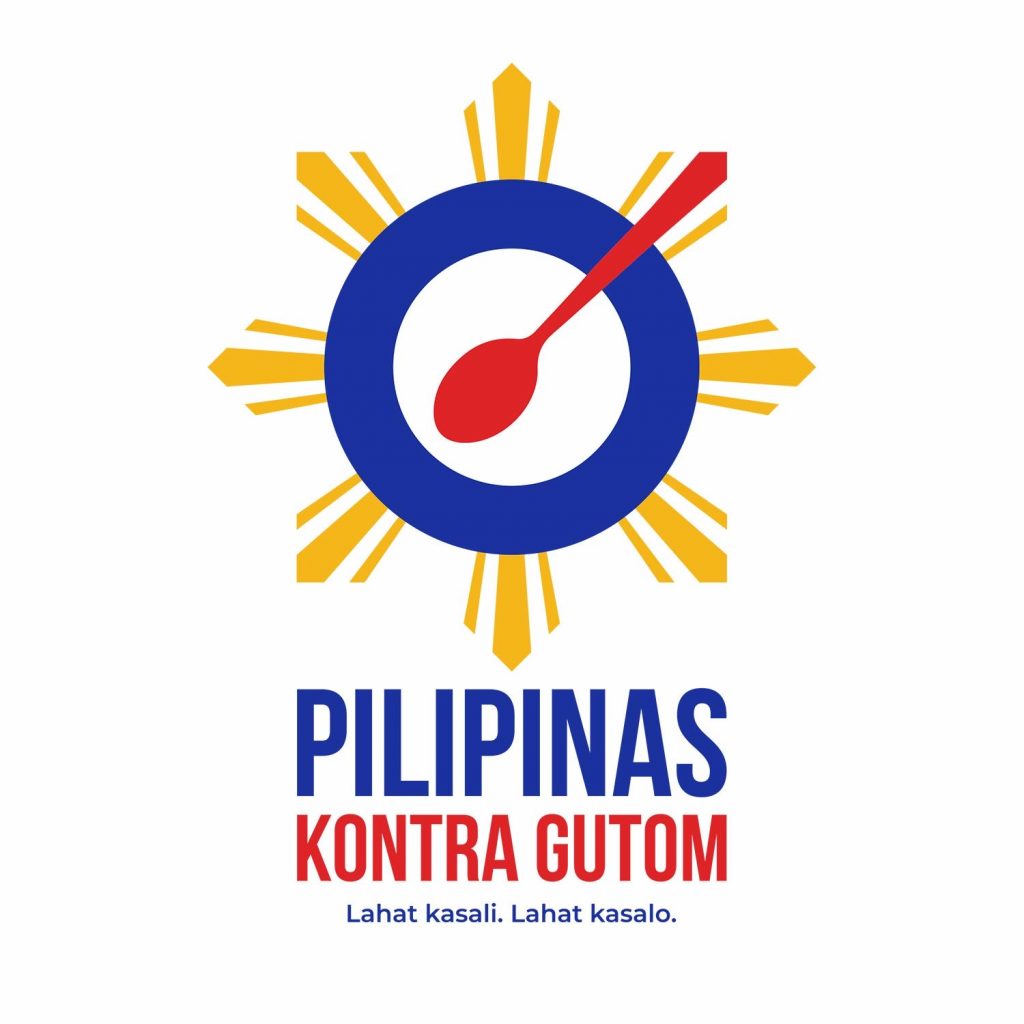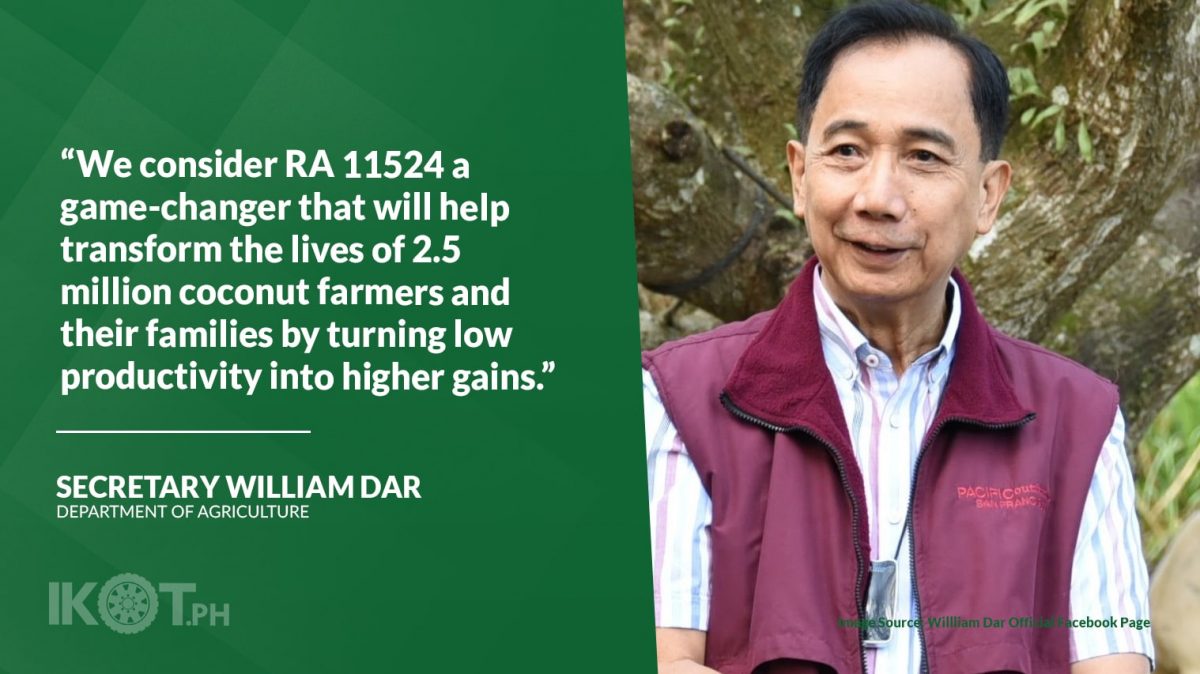The coconut sector will be the first to reap the benefits of a well-planned development program with the completion of the Coconut Farmers’ and Industry Roadmap (Coco-FIRM).
“We commend the Philippine Coconut Authority (PCA) and its management, led by administrator Benjamin Madrigal, Jr., for their efforts, making them the first among the bureaus and attached agencies of the Department of Agriculture (DA) to have completed a commodity industry roadmap,” said Agriculture Secretary William Dar after receiving a copy of the roadmap, during the 48th PCA anniversary recently.
“Further, we sincerely thank President Rodrigo Duterte and both houses of Congress for the enactment of the Coconut Farmers and Industry Trust Fund (CFITF) Act or RA 11524, which we consider a game-changer that will help transform the lives of 2.5 million coconut farmers and their families by turning low productivity into higher gains,” Dar added.
“With an ensured funding of P75 billion over the next five years, it will pave the way to modernizing and industrializing the Philippine coconut sector.”
“With ensured funding of P75 billion over the next five years, it will pave the way to modernizing and industrializing the Philippine coconut sector,” the agriculture chief said.
Among other major provisions, the RA 11524 calls for the drafting of a Coconut Farmers and Industry Development Plan (CFIDP) to serve as a guide in the utilization of the trust fund. The law was signed by President Duterte on February 26, 2021.
As early as August 2019, when the agriculture head assumed office, he instructed DA officials to craft or update the existing commodity industry roadmap (CIR), which is one of the eight paradigms under the DA’s “new thinking in agriculture”.
An industry roadmap details a sector’s current situation and outlines the various interventions it needs to modernize, industrialize and be globally competitive.
It also serves as the basis for effecting policies and implementing programs that support the particular industry’s development and growth, including government funding to support its key initiatives.
For his part, Madrigal said in early 2020 they sought the expertise of a team from the University of the Philippines-Los Baños (UPLB) to help craft a coconut CIR, which they now call Coco-FIRM.
“It was a product of painstaking consultations with various coconut farmers’ organizations, industry players, civil society, academe, concerned government agencies, local government units, and other stakeholders nationwide,” he said.
“In contrast to other commodities, a roadmap for the coconut industry is much more complicated, considering the many downstream food and non-food products that could be developed from the ‘tree of life.’ We are proud that we are among the first among DA bureaus and attached agencies to have completed it,” Madrigal added.
He said the Coco-FIRM has seven thematic areas, namely:
- Promotion of coconut farmers’ welfare and social protection;
- Strengthening and empowerment of coconut farmers’ organizations and associations;
- Increasing and sustaining coconut production programs;
- Establishment of coconut farming systems such as agri-hub for coco products;
- Enhancing global competitiveness of traditional and non-traditional coco products;
- Expanding trade and marketing, and conduct of innovative research and development; and
- Strengthening of institutional policies.
Dar also commended the PCA in its efforts to update the National Coconut Farmers Registry System (NCFRS), that forms part of the “mother” Registry System for Basic Sectors in Agriculture (RSBSA).
He particularly thanked the PCA field personnel, who — despite the limitations in resources and restrictions in mobility — bravely ensured that coconut farmers are registered in the NCFRS.
For his part, Madrigal said “the past year has been tough and challenging, and 2022 will be even more demanding with the implementation of RA 11524. All the more, we must continue to work with a greater sense of urgency.”
“Despite the pandemic, we have raised the price of copra, from a low of P15 per kilo at the start of 2020 to a high of P34 per kilo by yearend.”
“Our efforts are paying off, as, despite the pandemic, we have raised the price of copra, from a low of P15 per kilo at the start of 2020 to a high of P34 per kilo by yearend. Thus, our farmers have regained confidence in the industry,” he added.
The PCA has also shifted efforts to provide short-gestation crops and small ruminants to ensure food sufficiency for coconut farmers and their families and the consuming public.
“Further, through the P1.7-billion fund allocated in Bayanihan 2, we were able to provide cash and food subsidies to 346,000 marginal coconut farmers and their families,” Madrigal said.
In all, Dar said “we need to increase the contribution of the coconut subsector to total agricultural gross value added (GVA), being the country’s top export product. And with substantial budgetary resources, thanks to RA 11524, we could awaken a ‘sleeping giant’ and restore us to a position of global leadership.”
The Philippines ranks as the world’s number one exporter of coconut products, with average export revenues of P91.4 billion, from 2014 to 2018, according to the PCA.
Coconut is planted in 3.6 million hectares, mostly in 69 provinces, where there are 347 million fruit-bearing trees that produced in 2019 14.8 million metric tons (MMT), in copra terms.
That year, coconut export products totaled 2 MMT in copra terms, led by coconut oil, copra meal, desiccated coconut, and oleochemicals, according to the United Coconut Association of the Philippines (UCAP).
The country’s top three producing regions are Davao, Zamboanga Peninsula, and Northern Mindanao.


